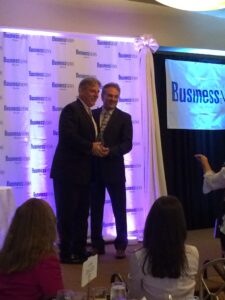Partner Kathryn Dalli, head of the firm’s intellectual property law group, has been practicing law for over 30 years. Ms Dalli has a diverse background in the arts, business, entertainment and litigation. Ms. Dalli was approached by Hamptons Art Hub to write a column focused on practical legal tips for artists.
Hamptons Art Hub editorial is created by well-respected journalists and experienced professionals who are steeped in the art world and present their insights in a clear manner designed to engage art fans, collectors, art world professionals, artists and anyone interested in discovering contemporary and modern art. Read Kathryn’s article below.
https://hamptonsarthub.com/2018/05/16/features-creativity-the-law-collage-and-fair-use-under-the-copyright-laws/
Collage is by its very nature an assemblage, compilation or collection of forms to create a new whole. Oftentimes, artists will use an existing work or a portion of an existing work in their collage that may be protected by U.S. Copyright laws. In the case of previously existing works that are considered to be in the public domain, the artist is free to use that work without concern.
Works that are in the public domain are those that are no longer protected by copyright because the copyright expired. Copyright protection does not last forever, and the term of a copyright depends upon when it was first created. Anyone can use a work that is in the public domain without obtaining permission, but no one can ever own it.
If an existing work is not in the public domain, different considerations and rules apply. For example, what if an artist wants to use a copyrighted photograph or a portion of that photograph in her work? Must the artist get permission first from the copyright owner to use that work or a portion of it in her collage?
If permission can be easily obtained, then getting permission is probably the best way to proceed to avoid any possible interpretation of unlawful use or infringement. If for some reason the artist cannot or does not want to obtain permission, the doctrine of “fair use” under the copyright laws of the U.S. may offer some protection.
“Fair use” is a defense in cases where copyright infringement is charged. The concept of fair use is grounded in fulfilling the very purpose of copyright: to promote the progress of the arts and sciences and allow authors, artists and others to be able to express their creativity. Still, this concept must be balanced with honoring the property rights established in creative works under copyright law.
There are four factors that the courts consider in determining whether or not use of previously copyrighted material constitutes a fair use. Without getting too bogged down in legal analysis, the bottom line is that the new work must be transformative, any copyrighted work used should be proportional to the whole and not be too substantial in terms of the overall work, and the artist must have a genuine creative reason for using the image or other work, rather than using the material to get attention or avoid coming up with something fresh.
As collage artists and others who appropriate copyrighted material, your creativity should not be stifled, but your creative process should include respect for the property rights of others.
Kathryn Dalli is a partner with Twomey, Latham, Shea, Kelley, Dubin & Quartararo, LLP, and is head of the firm’s intellectual property law group. Ms. Dalli has been practicing law for over 30 years and has a diverse background in the arts, business, entertainment and litigation. While in college, she studied art, opera and literature at the university of Pisa, Italy. After law school, she worked at a large international talent agency in Los Angeles, California. Click here for Kathryn’s full bio.
Copyright 2018 Hamptons Art Hub LLC. All rights reserved.






